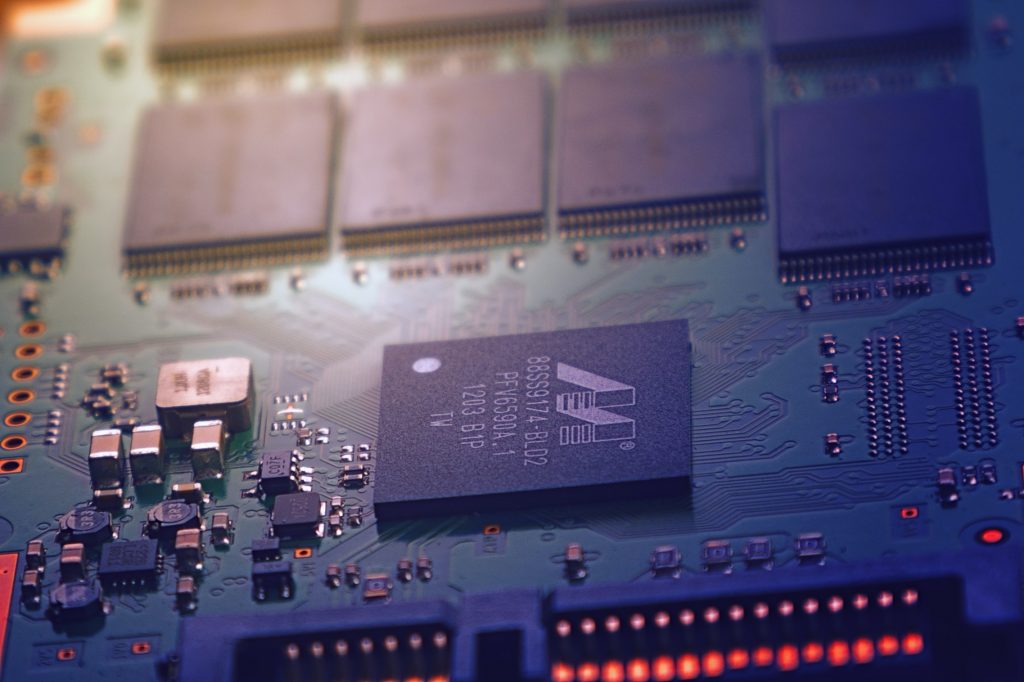In this blog we explain exactly what TSMC chips are and how this surge in demand may affect your Hardware Supply.
We will also discuss possible options to explore instead when buying new devices is not an option.
TMSC Chips
Taiwan Semiconductor Manufacturing Company, better known as TSMC, is a company that is crucial to our way of life. They build the chips that allow innovative companies to make electronics smaller, sleeker and more compact. These products include graphics cards, processors, and general IC’s (Internal Circuits).
From your phone and laptop to your car, TSMC is responsible for keeping industries functioning. How? TSMC controls 84% of the market for chips by offering the smallest, most efficient circuits. Therefore, they are relied on by the world’s biggest technology brands for their own products and services. This ranges from Apple in America all the way to Alibaba in China.
Why is there a demand issue?
Demand is greatly outweighing supply, a problem only exacerbated by the Coronavirus pandemic and global lockdowns. As the world ground to halt and COVID-19 forced us into our homes, our reliance on technology greatly increased. The increased use of our laptops and smartphones has created a demand for these products no one could have predicted.
Is there an end date?
According to the CEO of TSMC, this is likely to continue into 2022. This is despite the fact they are ploughing over $100bn into new manufacturing facilities to better meet demand. All activities are designed to boost capacity, not just meeting demand, but helping keep the chips reasonably priced.
The switch to ARM Architecture.
The domino effect of this surge in demand reaches far, especially as Resellers and Distributors face issues meeting the demand for graphics cards. This unexpected hit to their trade has meant a general switch to ARM Architecture. However, this switch from CISC to RISC does have some benefits. This technology (which has been around since the early 80’s) does allow for better power consumption.
Nvidia, Intel, Samsung and Apple – how manufacturers are reacting.
With ARM having recently released v9, users can expect an approximate increase in performance of 30% when compared to v8.
These chips will hit the market in Q2 of 2022 and manufacturers like Nvidia have already been trying to buy ARM. If they pull it off, it will potentially leave them in a position to taken over the server hardware market. With such an increase in demand, there is also scope for other companies like Samsung to move in and pick up some of the slack.
On the other hand, there is one company that is not currently planning a move into this space: Intel. They are several generations behind, and a statement by HP has stated that Intel has reduced profit projection in 2021. Their chips are currently more expensive, but do not produce the same level of performance as their competitors’ counterparts.
And lastly is Apple establishing themselves as an emerging player. Having moved away from Intel, Apple are currently making their own ARM-based silicon processors. These processors will significantly outperform desktop PC’s with X68 processors.
What does this mean for your hardware supply?
So, what does all this mean for companies as the world starts to open again? Well, chances are that many will be looking to refresh their hardware. With everyone being in the same position, this surge in requirements will put further strain on an already overwhelmed market. Many will likely be seeking hardware that they just will not be able to get their hands on.
What are your options?
How can you combat this as business picks up again post-lockdown? You can still ensure your hardware is where you need it to be. Your first port of call should be to order hardware as far in advance as possible, to offset any potential issues around delays.
If that ship has already sailed, then consider the very viable option of not replacing it at all. Instead consider upgrading it instead.
Upgrading your existing devices.
This often-overlooked option allows you to revive old devices and keep them running for longer. Upgrading your device can involve:
- Increasing the RAM capacity
- Changing the drive from HDD (Hard Disk Drives) to SSD (Solid State Drives). These are faster, lighter, more durable, and use less energy
- Update operating systems to the latest version
Finally, if the computer is too old to be upgraded, consider fully migrating your data to the cloud. Thereby keeping it secure and protected in case of a device crash.
No Problem IT are here to help.
At NPIT, we are happy to provide you with a full audit and consultation of your current IT infrastructure and provide you with solutions to your IT issues. We will:
- Review your requirements, both immediate and long term
- Upgrade your existing devices to ensure that they are business compliant and running with maximum efficiency
- Ensure all relevant software is current
Please get in touch with us today for an obligation-free chat around your requirements, or head to our website to start your free 30-minute consultation about how we can support you and your business.






